SUMMARY
This is AI generated summarization, which may have errors. For context, always refer to the full article.
![[OPINION] Class struggle: On the history of Christianity in the Philippines](https://www.rappler.com/tachyon/2021/03/Christian-oppression.jpg)
2021 marks 500 years since Christianity came to the Philippines. As a predominantly Catholic country, the celebration of its quincentennial is very important and is inevitably tied to our nation’s whole history. But it is also a perfect time for us to not only celebrate, but also evaluate its legacy in our history and society.
According to patriotic historian Renato Constantino, Filipino [Christian] history is predominantly seen through the lens of Spanish and American historiography. During the nationalist ferment of the late ’50s up to the early ’70s, there were attempts to challenge these predominant views of history. These can be seen through works such as the 1946 pamphlet “Peasant War in the Philippines,” which was anonymously reprinted in the Philippine Social Sciences and Humanities Review around 1958; “Revolt of the Masses” by Teodoro Agoncillo; “The Philippines: A Past Revisited” by Renato Constantino; and “Philippine Society and Revolution” by Amado Guerrero.
With varying perspectives regarding its history, one thing is clear: the history of Christianity in the Philippines is a history of class struggle.
Colonial origin
In the discourse of its history, we cannot deny nor omit its colonial origins. Colonization projects require ideological justifications in order to hide their economic and political motives. Christianity was introduced to us by Spanish conquistadors as part of their colonization project. The cross was used as an extension of the sword, converting colonized barangays into Christian subjects.
To solidify the Spaniards’ hold on a pre-nation-state colony, our native culture was erased from our collective consciousness. Native religion was seen as blasphemous devil worship. Our babaylans became witches or aswangs.
Christianity also had to assimilate some native traditions and concepts. Our celebration of ancient deities and harvests were replaced by fiestas dedicated to Christian saints. The bul-ul was replaced by the Sto. Nino. Bathala was replaced by the Holy Trinity. Natives were displaced from their lands and forced to build huge cathedrals and churches to further promulgate Christianity.
Catholicism became a cultural apparatus to pacify natives. Our ancestors were taught to obey the word of God as interpreted by the colonizers, lest they suffer eternal damnation. They were taught that salvation should not be sought from this material world, but from the afterlife. Be a good and obedient subject now and go to heaven in death, or else suffer in hell.
Resistance to Spanish rule is considered heresy. Leaders of revolts, as well as liberal reformists, were called herejes and were persecuted. Friars and the Church became feudal landlords with more powerful political clout than government officials.
Patriarchy and other feudal values were also perpetuated through religion. Women, who in pre-colonial times were of equal footing with men, were relegated to a subservient role.
The end of Spanish colonization did not put an end to the role of religious institutions as cultural apparatus. It was eventually used by American imperialists, who introduced capitalistic values to justify their “benevolent assimilation.”
Contradictions and struggles
As an institution used for co-optation, religion inevitably reflected societal contradictions. While it was used to perpetuate inequality, the people, who are subjects of oppression, also saw Christian teachings as a source of liberation.
During Spanish colonization, struggles for liberation and equality took religious forms such as the secularization movement, which resulted in the execution of the GomBurZa, and the Confradia of Hermano Pule. Some revolts also held masses and recognized religion, such as the revolt of Dagohoy.
Even the 1896 Revolution, despite its liberal ideological leanings, also recognized the liberating teachings of Christianity. This revolutionary period also saw the emergence of patriotic clergymen, with the formation of the Iglesia Filipina Independiente.
In the time of Martial Law, church people were instrumental in resisting the dictatorship. The church carried the issues of human rights violations and social inequalities perpetuated by the Marcos regime. Church people played a crucial role during the EDSA People Power movement that ousted the dictator.
Progressive church people were also influenced by liberation theology, which originated from Latin America and seeks to apply the teachings of Christ in fighting against poverty, inequality, imperialism, and all forms of injustices.
Christianity and liberation
We cannot separate the history of Christianity with the Filipino people’s history of struggle.
In analyzing the emergence of social movements within the Christian religion, it is helpful to look at Alf Gunvald Nilsen’s and Laurence Cox’s analysis on how “movements from below” emerge. As institutions such as religion promote “common sense” (or what ruling classes think as acceptable behavior from the oppressed) that underpins the subaltern people’s activities, they [subalterns] eventually develop local rationalities that serve to articulate their oppression.
Filipinos saw the disjunct between the colonizer’s religious teachings and their actual conditions. In times of historical crises, religion becomes, according to Karl Marx, the “sigh of the oppressed,” and becomes an expression of real suffering. Its teachings helped, in a way, in articulating the people’s plight.
Christianity’s history is rooted in the struggle of the oppressed. After all, it was originally a movement of oppressed people. It was “a religion of slaves and emancipated slaves.”
After 500 years, some conditions may have changed, but oppression and injustice remain. We live in a society where impunity reigns and voices are silenced. Even church people are not spared. Missionaries such as Otto de Vries and Patricia Fox are being deported for showing solidarity with the oppressed. Church people are killed for speaking up against human rights violations all over the country. Meanwhile, the perpetrators of these injustices go to Mass and eat communion as if their hands are not tainted with the blood of their innocent victims.
Christianity is relevant to the people whenever it articulates their plight and inspires them to change it. As Christ was brought from heaven down to earth, Christianity teaches us that our salvation cannot be found in the afterlife, but should be built here through the collective action of the people. – Rappler.com
Orly Putong is a freelance writer and researcher. He is also a member of Panday Sining, a multidisciplinary cultural organization that promotes a national, scientific, and mass-oriented culture.
References
Constantino, R., & Constantino, L. R. (1975). The Philippines: A past revisited. Quezon City: Tala Pub.
Cox, L. (2013). What Would a Marxist Theory of Social Movements Look Like? C. Barker, L. Cox, J. Krinsky, A. Nilsen (Eds.), Marxism and Social Movements (Vol. 46, Historical Materialism Book Series, pp. 63-81). Leiden, The Netherlands: Koninklijke Brill NV.
Marx, K., Engels, F., Feuer, L. S. (1989). Basic writings on politics and philosophy. New York: Anchor Books.
A Contribution to the Critique of Hegel’s Philosophy of Right [Introduction]. (1844). K. Marx (Author). Paris, France: Deutsch-Französische Jahrbücher.
Add a comment
How does this make you feel?
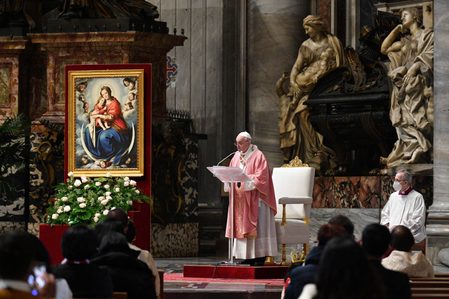
![[ANALYSIS] Are Filipinos more religious because of COVID-19?](https://www.rappler.com/tachyon/2020/10/filipinos-more-religious-covid-october-23-2020.jpg?fit=449%2C449)
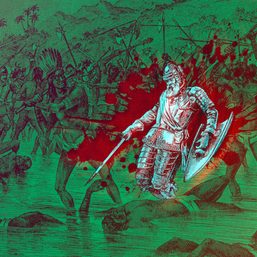
![[OPINION] Why celebrate Magellan when there was always Sharif Muhammad Kabungsuwan?](https://www.rappler.com/tachyon/2021/03/tl-sharif-kabungsuwan-640.png?resize=257%2C257&crop_strategy=attention)
![[OPINION] No, we shouldn’t celebrate 500 years of Christianity in our country](https://www.rappler.com/tachyon/2021/03/imho-dont-celebrate-500yr-christianity.jpg?resize=257%2C257&crop_strategy=attention)
![[Judgment Call] Is Rappler an ‘enabler’ of Catholic ‘copycats’?](https://www.rappler.com/tachyon/2024/04/catholics-copycats-april-18-2024.jpg?resize=257%2C257&crop=418px%2C0px%2C1080px%2C1080px)





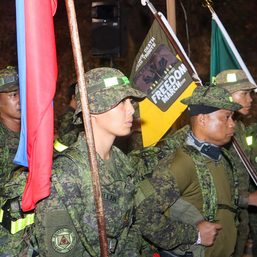
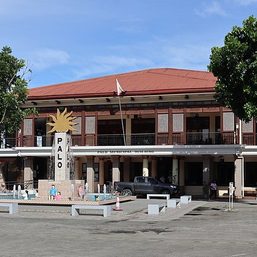

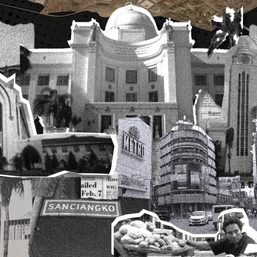
There are no comments yet. Add your comment to start the conversation.